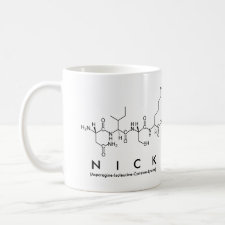
Authors: Turner NW, Liu X, Piletsky SA, Hlady V, Britt DW
Article Title: Recognition of Conformational Changes in b-Lactoglobulin by Molecularly Imprinted Thin Films.
Publication date: 2007
Journal: Biomacromolecules
Volume: 8
Issue: (9)
Page numbers: 2781-2787.
DOI: 10.1021/bm7004774
Alternative URL: http://www.pubmedcentral.nih.gov/articlerender.fcgi?artid=2637992&tool=pmcentrez
Abstract: Abstract: Pathogenesis in protein conformational diseases is initiated by changes in protein secondary structure. This molecular restructuring presents an opportunity for novel shape-based detection approaches, as protein molecular weight and chemistry are otherwise unaltered. Here we apply molecular imprinting to discriminate between distinct conformations of the model protein -lactoglobulin (BLG). Thermal- and fluoro-alcohol-induced BLG isoforms were imprinted in thin films of 3-aminophenylboronic acid on quartz crystal microbalance chips. Enhanced rebinding of the template isoform was observed in all cases when compared to the binding of nontemplate isoforms over the concentration range of 1-100 g mL-1. Furthermore, it was observed that the greater the changes in the secondary structure of the template protein the lower the binding of native BLG challenges to the imprint, suggesting a strong steric influence in the recognition system. This feasibility study is a first demonstration of molecular imprints for recognition of distinct conformations of the same protein



Join the Society for Molecular Imprinting

New items RSS feed
Sign-up for e-mail updates:
Choose between receiving an occasional newsletter or more frequent e-mail alerts.
Click here to go to the sign-up page.
Is your name elemental or peptidic? Enter your name and find out by clicking either of the buttons below!
Other products you may like:
 MIPdatabase
MIPdatabase









